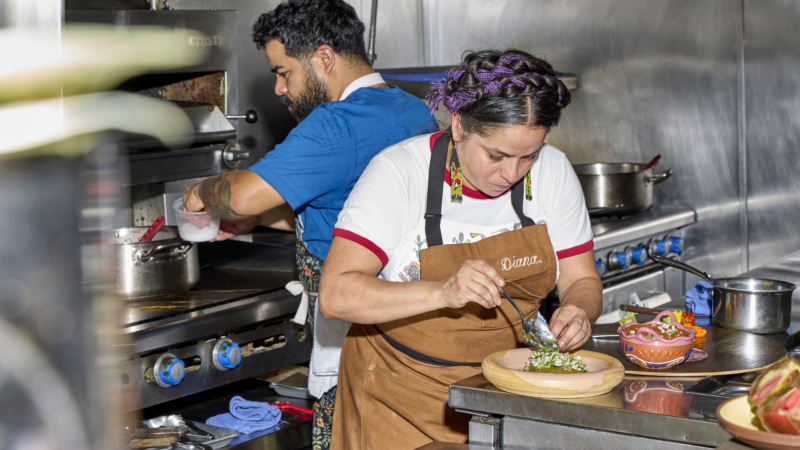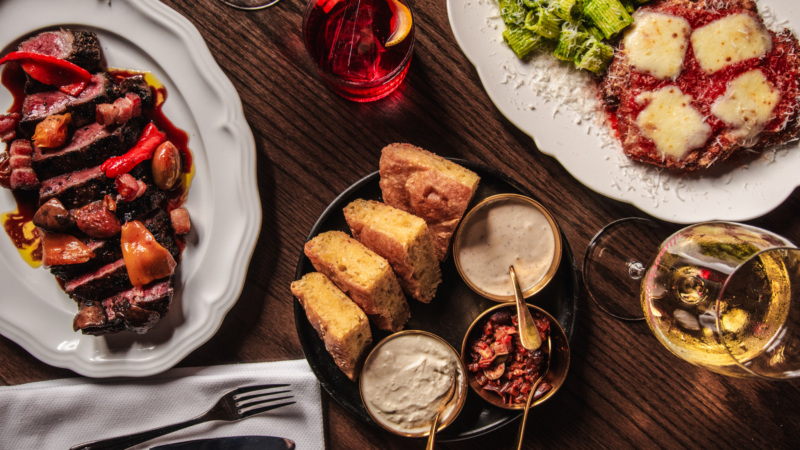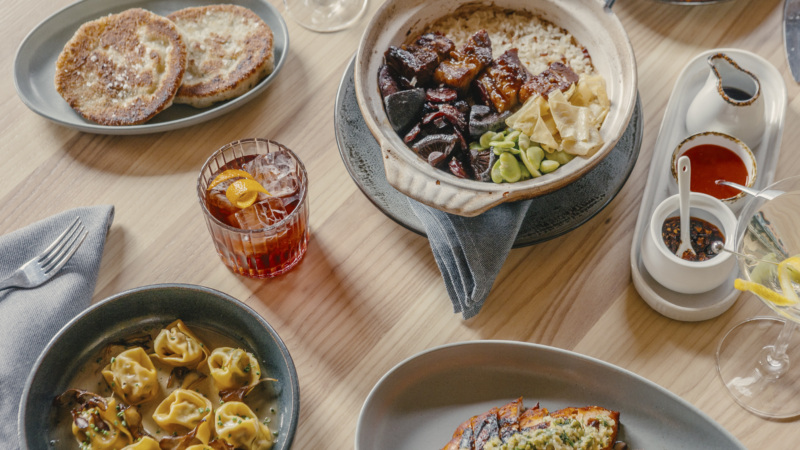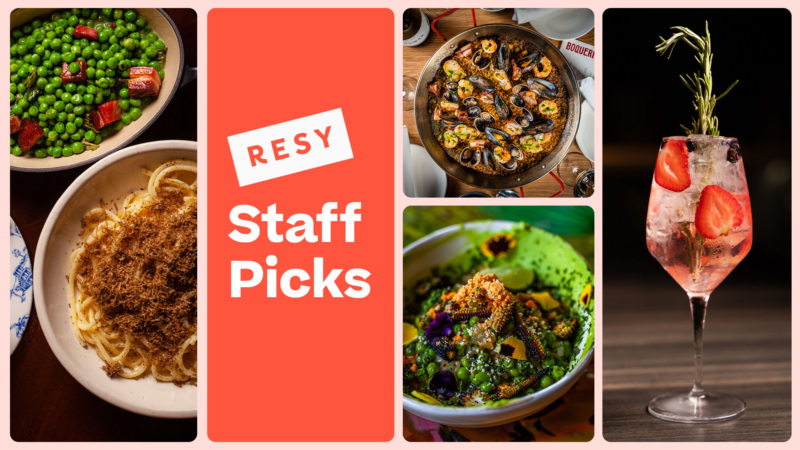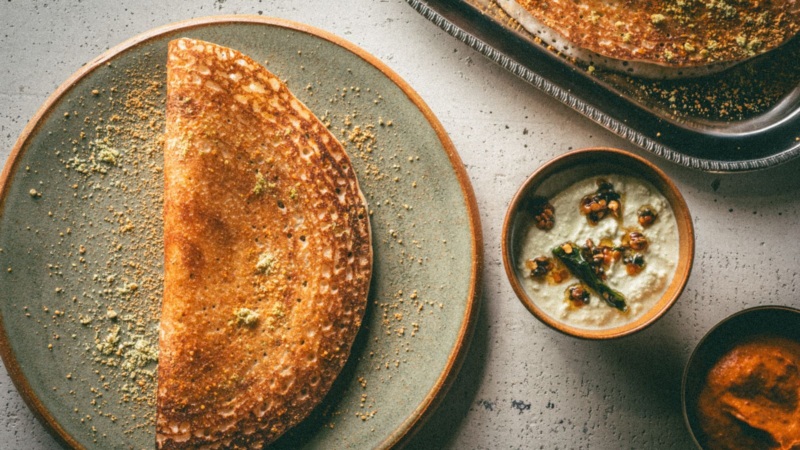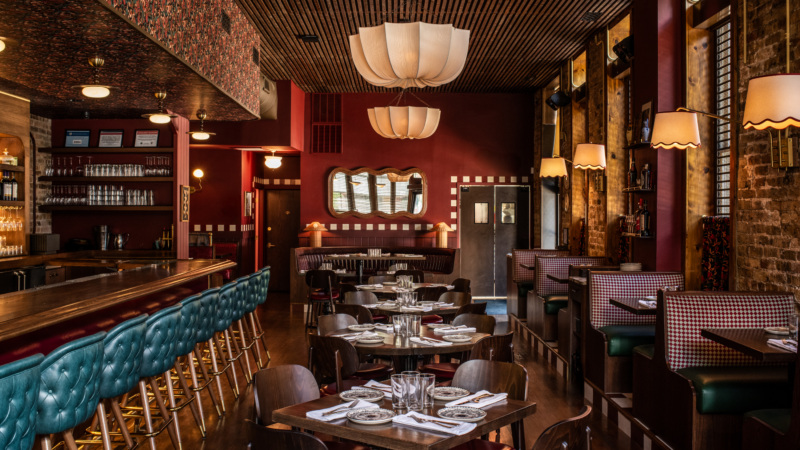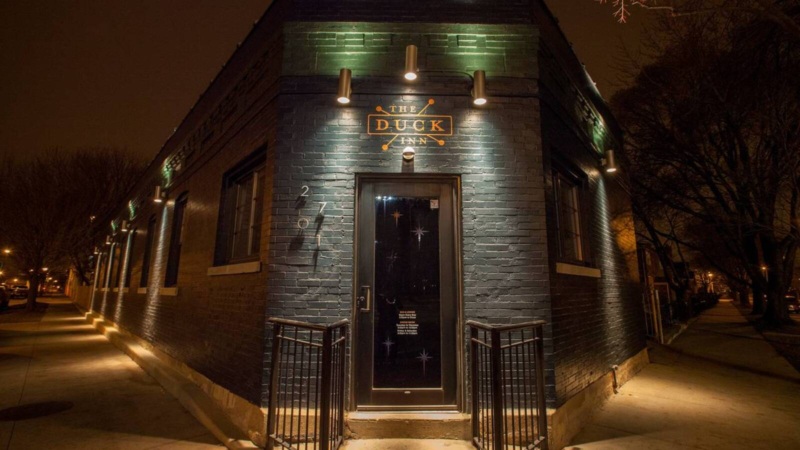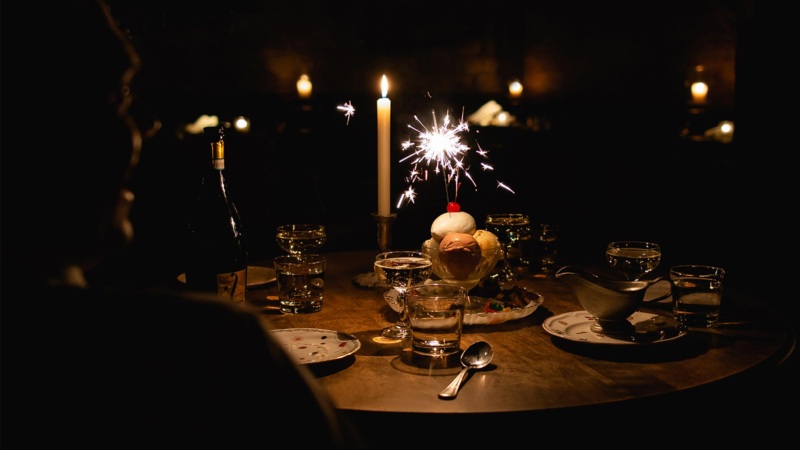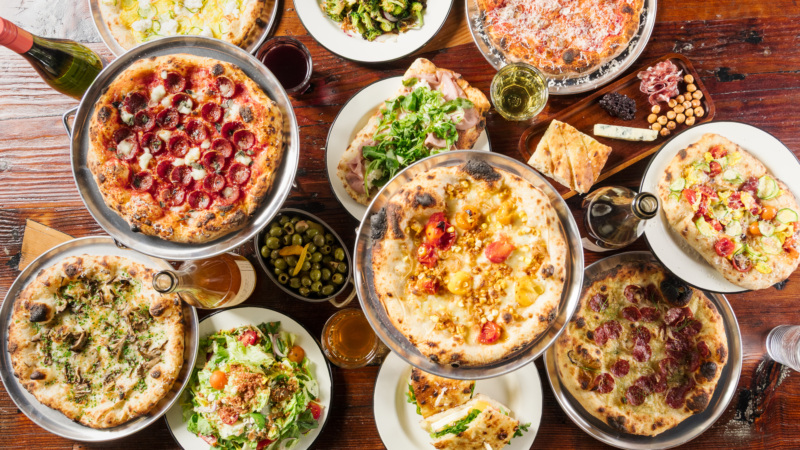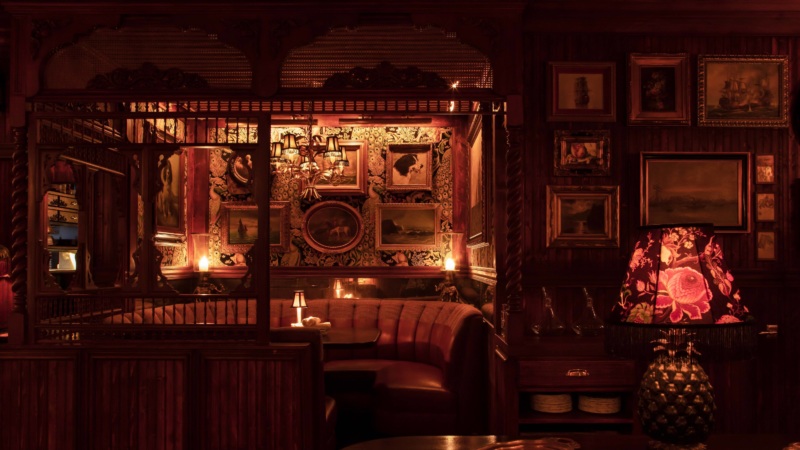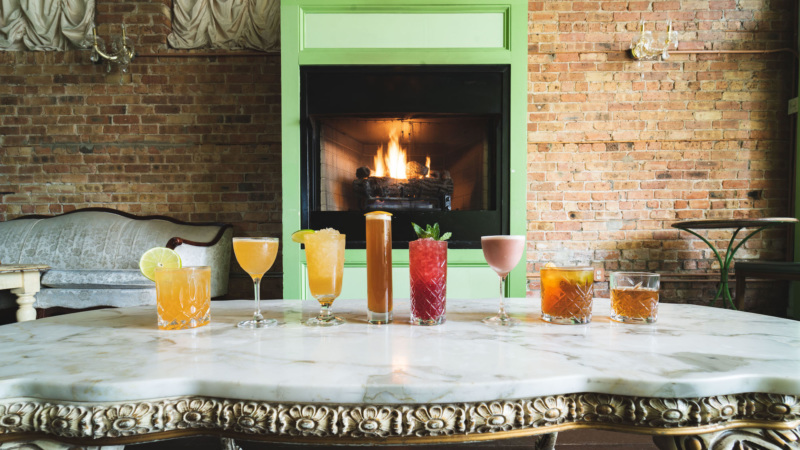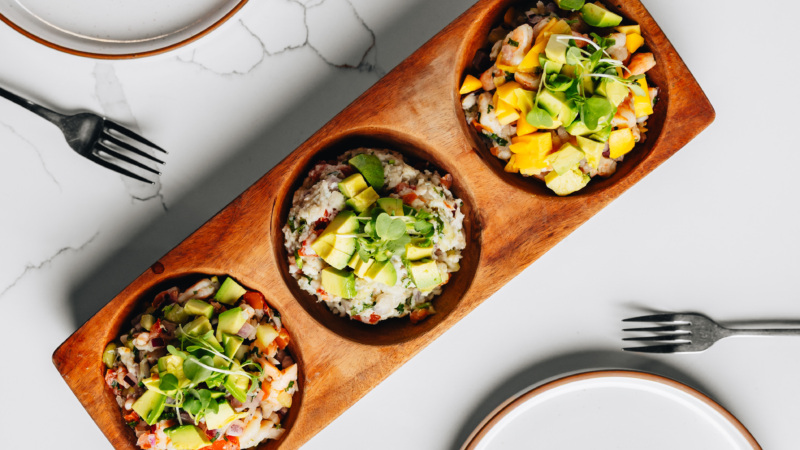
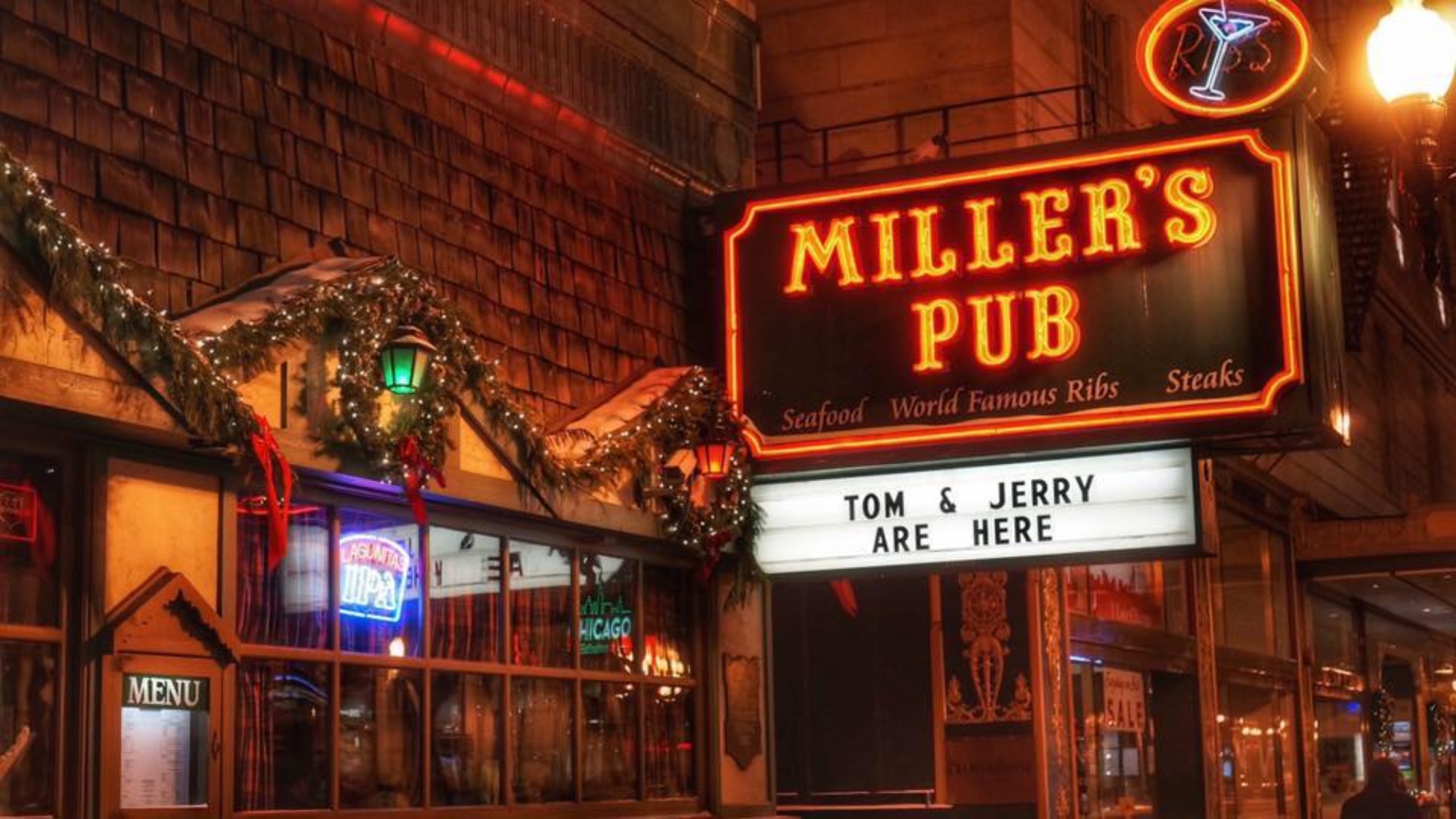
At Miller’s Pub, It’s Tom & Jerry Time Again (And Again)
Published:
Any December night for the past 60 years or so, there has been a reliably warming beacon of hope for weary holiday shoppers braving the snow and icy winds of Chicago’s Loop. All one had to do was swing around the corner from the stately Palmer House and walk a few yards south alongside the “L” tracks on South Wabash and look up. There it was, in holiday red and green neon: Miller’s Pub. Above it was a smaller neon oval, explaining why you might want to venture inside by alternately flashing “Ribs” and the silhouette of a Martini. And below the larger sign was the clincher: “Now Serving Tom & Jerry.”
No, Miller’s Pub hasn’t just laid place settings for a cartoon cat and mouse. Tom & Jerry is a drink. It’s basically a hot egg nog fortified with plenty of dairy and plenty of booze. Its origins stretch back more than two centuries and the milky punch was once world famous — so much so that Tom & Jerry punch bowl sets were as common in bars and households as salt and pepper shakers. Today, the Yuletide tradition is more honored in the breach than in the observance. But it retains a foothold in the snowier climes of the American Midwest. And no restaurant in Chicago stands as resolutely behind the cocktail than Miller’s Pub, which has been in business since 1935.
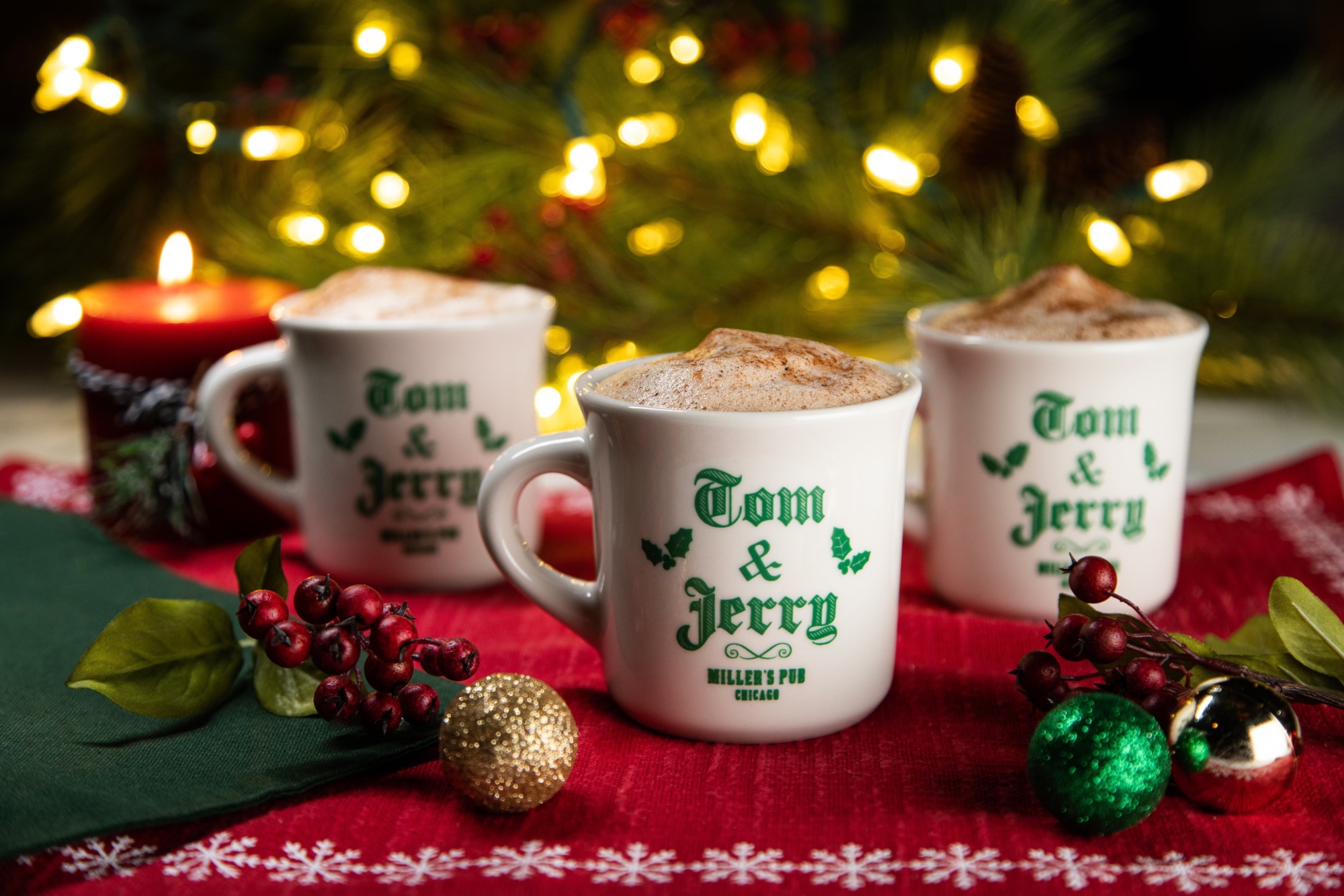
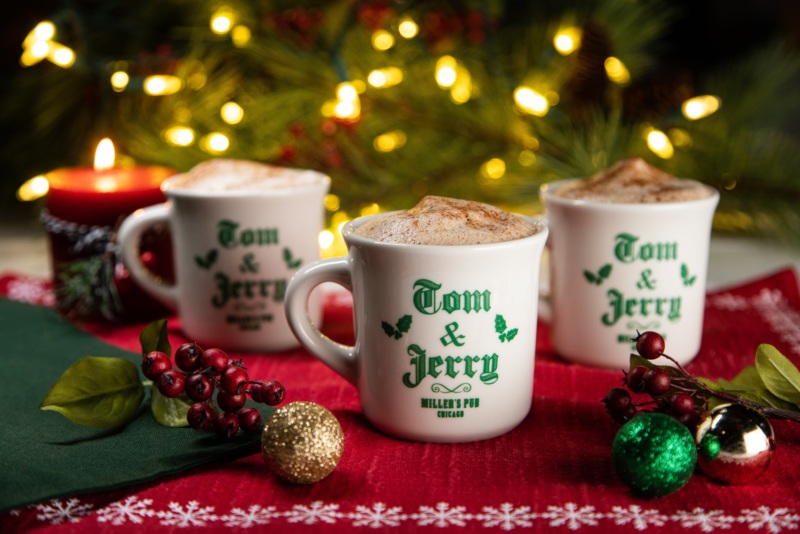
Walk into Miller’s on any winter day — and you can walk in basically any time you like, because the bar (at least during normal, non-pandemic times) is open until 4 a.m. seven days a week — and you will find a creamy bowl of batter sitting dead center behind the long bar, which stretches across the entire length of the north wall. Order one and a black-vested bartender, who very likely boasts a long tenure behind that bar, will ladle out a serving into a brown ceramic mug and slide it in front of you.
A bar stool at Miller’s is one of the more homey and inviting spots in a city known for homey and inviting bars. The lights are kept at a low amber glow. The wall is covered with the kind of corny oil paintings of sodden old men that used to come free with a living room set. A chalkboard tells of Miller’s impressive selection of craft beers on draft. (You can take them away in growlers if you like.)
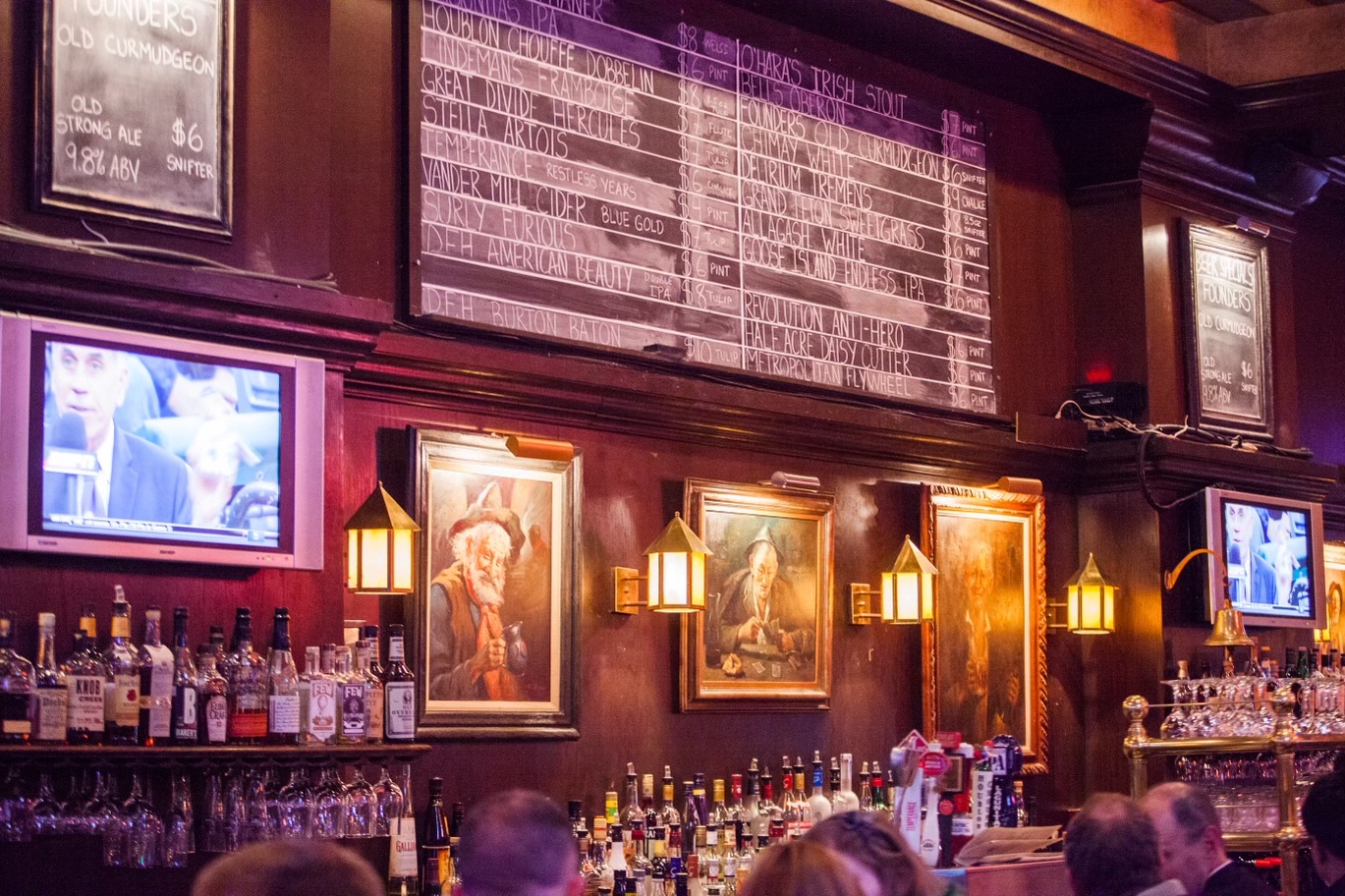
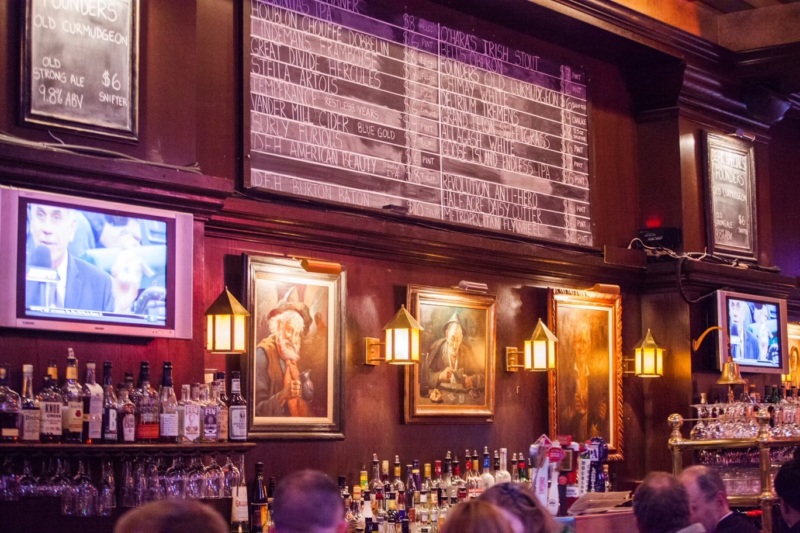
The bar scene is so warmly enveloping that it’s easy to forget that behind you, within a forest of wooden pillars and stained glass, is a large restaurant. It’s here that you can get the famous Canadian baby back ribs, which come by the slab or the “slab and a half.” There’s also prime rib, fried chicken, fish and chips, French dip, burgers and everything else you would expect at a stick-to-your-ribs chop house like Miller’s. (The kitchen is open until 2 a.m. and makes for a much better option that room service at the Palmer House, or any other downtown hotel.)
Look closely at the many framed photos on the walls and you’ll find the four brothers who made Miller’s what it is today. The big secret is none of them were named Miller. Pete, Nick and Jimmy Gallios brought the business from the hapless Millers in 1950; in 1953, brother Vannie joined them. No one could afford to change the sign, so the name stuck. (The building Miller’s occupies isn’t the original location; that was a nearby Adams Street address that is now the site of a parking garage. The current home is actually the former setting of the Wabash Inn and Vannie’s, two other Gallios restaurants. Luckily, the façade looks 85 years old.)
Photos attest to the fact that Miller’s has had its share of celebrity regulars, particularly sports figures. Celebrities that played the swanky Empire Room at the Palmer often ended their evenings at Miller’s. Still, the pub is no elite hideaway. It has always felt like the sort of place where any lost tourist or schlub just off the slushy streets of downtown would feel at home. Years ago, Chicago newspaperman Rick Kogan once called it the “proletariat Pump Room.” More recently, another Chicago journalist observed “few places in Chicago are more Chicago than Miller’s Pub.” That’s just about the finest compliment a Windy City restaurant can hope for.
Robert Simonson writes about cocktails, spirits and bars for The New York Times. He is the author of four books on cocktails, most recently “Mezcal and Tequila Cocktails” and “The Martini Cocktail,” which won a Spirited Award in 2020 and was nominated for awards from the James Beard Foundation and the International Association of Culinary Professionals (IACP). Follow him on Instagram. Follow Resy, too.

